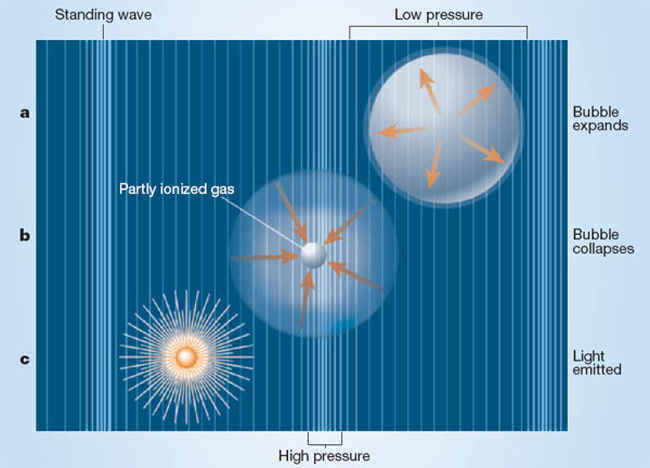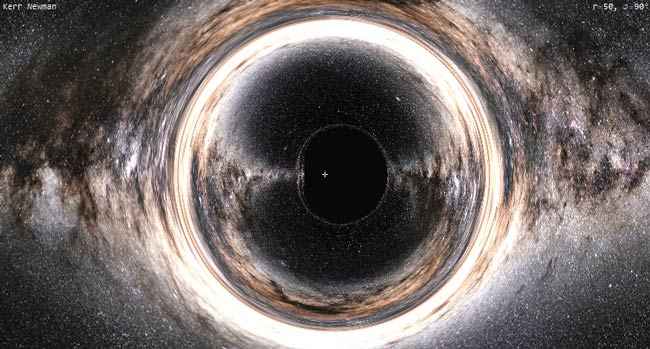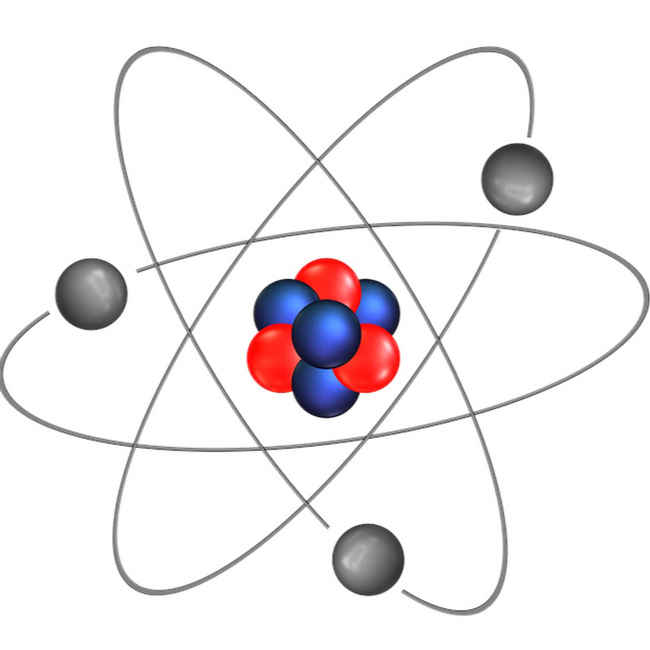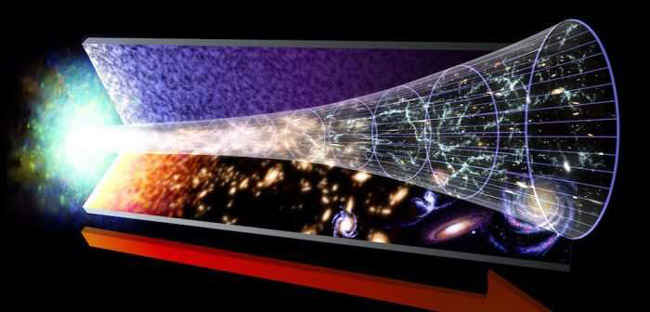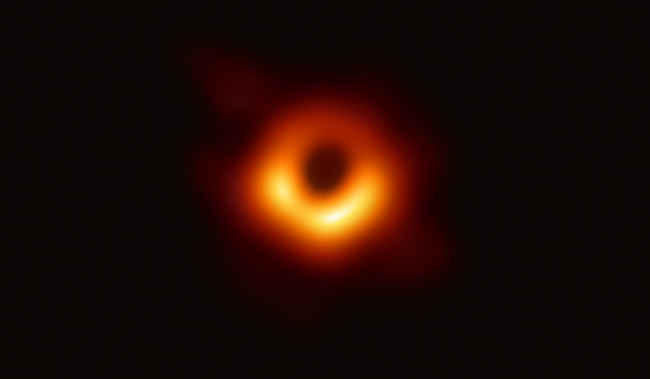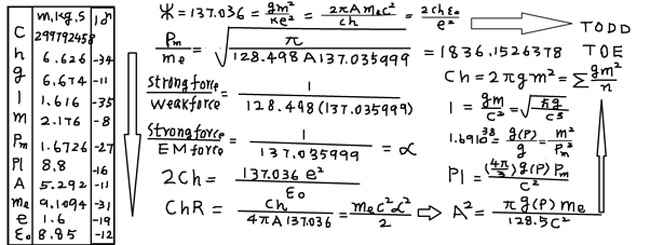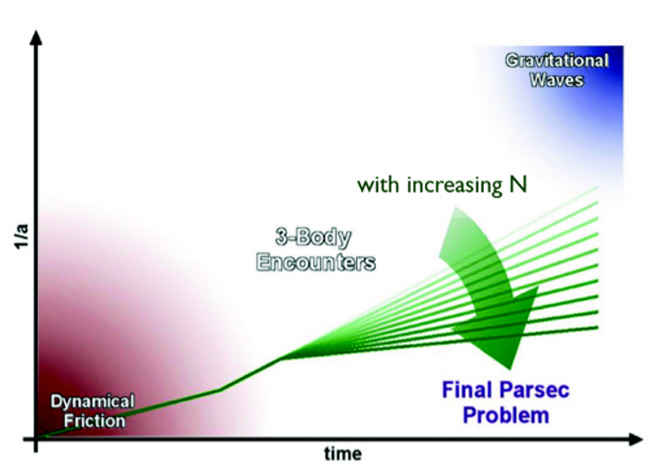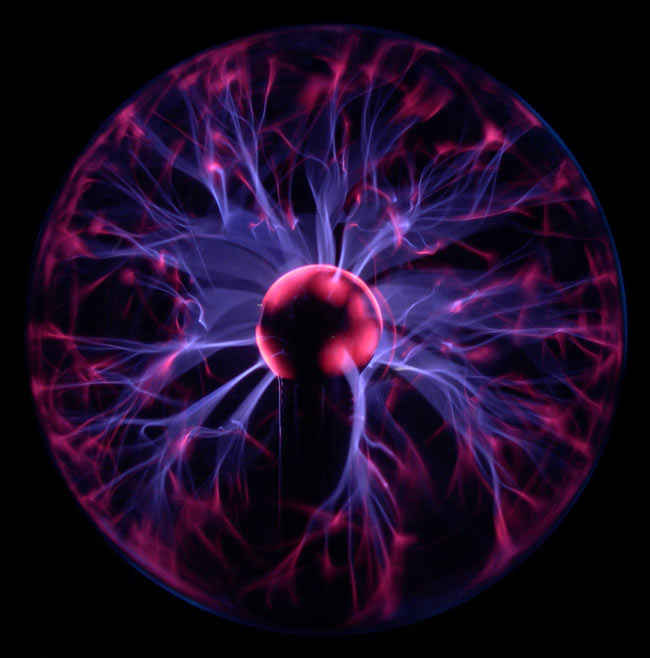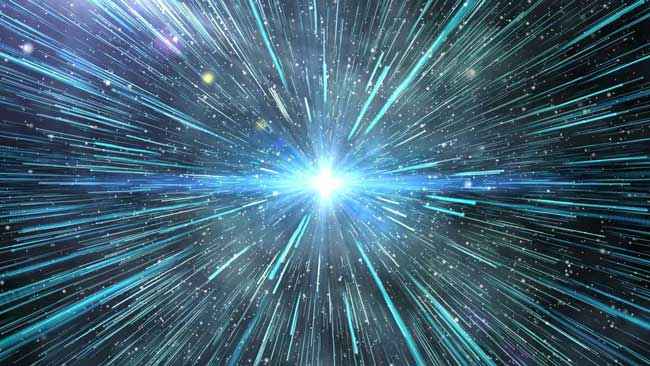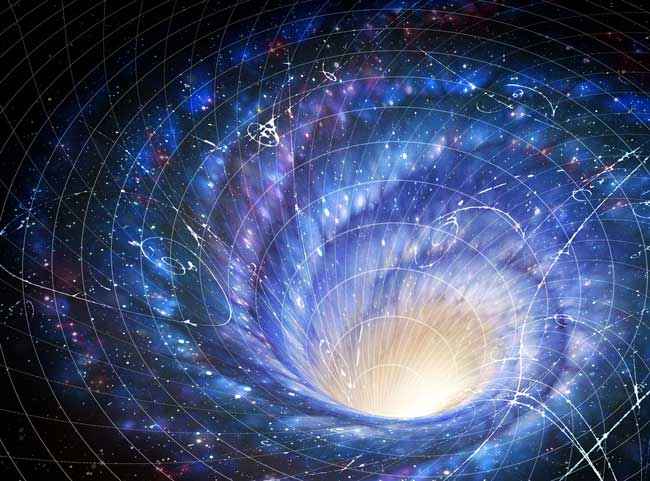18 unsolved mysteries of science

We’re a cocky bunch, us humans. We strut around like we know things, confident, sure-footed, head held high. In fact, the less we know as individuals, the cockier we seem to be. Then there’s ego, hubris, arrogance, braggadocio, chutzpah, vanity, pompousness, smugness, gall, audacity, pride, conceit, narcissism, and a hundred more words that I could add on to try and sound like I’m more intelligent than I actually am. That’s the human condition at work. We brag about our accomplishments and hide our failures. One look at all social media should prove that hypothesis.
This article attempts the exact opposite and wants to look at how little we know about so many things we seem to take for granted in science. We look at just 18 because it’s our eighteenth anniversary, but if this was our 9,873,987,456th anniversary, I’m pretty sure we could also find that many things we’re ignorant about – not that anyone would want to read that article…
Before we start, however, don’t expect to see things like evolution, vaccines, climate change, the moon landing or any of the conspiracy theories that abound as a testament to sheer human stupidity. Those things are settled questions. Yes, life evolved, humans have been to the moon, we’re adversely affecting our environment, and, for the love of Newton, vaccinate your kids!
With that out of the way, we’ll also mention that you won’t see a few popular mysteries of science mentioned here… for that very reason – they’re too popular. This isn’t a top of the pops chart where we play fan favourites, and thus you’re not going to see things such as dark energy, dark matter, the shape of the universe, the cause of the Big Bang, the fate of the universe, or the origin of life (aka abiogenesis). You already know about all of that, especially if you’ve been reading our magazine.
Anyway, enough with the long boring introduction to the article, let’s get started before you fall asleep…
Sleep
Speaking of falling asleep, that’s one of the things we don’t understand very well. Sure, we know what happens when we sleep, such as the brain entering an alternative state, and muscles all relaxing, and us being immobile and less “conscious” than when we are awake, but we don’t know why we do it. Sleep is generally broken up into non-REM sleep and REM sleep – Rapid Eye Movement. When we fall asleep, we first enter non-REM sleep until we’re considered to be in deep sleep. We know this because heart rates dip, body temperature falls and the brain uses the least amount of energy (and thus, has the least amount of activity). Then, between non-REM sleep periods, we enter four to six periods of REM sleep per night (standard eight-hour sleep). REM sleep is characterised by the rapid movement of the eyes behind our closed eyelids, a near complete loss of muscle tone (body going limp), and increased brain activity. It’s during REM sleep that we dream. REM sleep occurs in mammals and birds and is pretty unique across the vast breadth of life forms.
Sleep itself is not totally necessary for life. Jellyfish and other Cnidarians don’t sleep, and neither do bacteria, fungi, plants or sponges – at least not in any way that we’ve been able to notice. Plants do have circadian rhythms though, i.e. they follow the earth’s day-night cycle and change biological processes to match. This is why plants produce oxygen when there’s sunlight, but only produce carbon dioxide at night – they produce carbon dioxide all day, actually, but the net output is miniscule when compared to the oxygen they output during the day. It’s an old wives tale that you can be harmed if you sleep in a room full of plants at night because they will suck up all the oxygen. They “breathe” such a little amount of oxygen, and let off so little CO2, that if you took a walk in a 300 square metre patch of trees, you’d be producing more CO2 than all of the trees put together!
There are many theories to try and explain why sleep evolved, or why it’s evolutionarily advantageous. For example, one school of thought is that sleep is the penalty for learning because all of what we learn is committed to long term memory by way of our synapses forming new connections when we sleep, and perhaps purging useless information. A simpler suggestion is that it’s merely necessary in order to conserve energy and allow healing of muscles and tissues – a mandated rest period that’s essential for survival. The pushback to that is that sleep makes us (and all mammals and birds) vulnerable to predators, and thus, it had to have a much bigger advantage in order for the trait to survive evolution.
Plus, why do we dream? And it’s not just humans who do it; if you’ve ever owned a pet dog or cat, you would have noticed them dreaming when they sleep – sometimes even trying to run when asleep! What’s the advantage of dreaming? There must be some advantage for it to survive natural selection. Not only do we have no idea why we sleep, but we also have no idea why we dream either.
Then there’s anaesthesia… it’s different from sleep in the sense that it’s a medically induced temporary coma, and there are no REM cycles. In fact, brain activity is more similar to a comatose patient than one who’s asleep. The fact that the brain can enter that low level of activity because of medicines and almost always wake up again with no damage is phenomenal, but it also begs the question about why we didn’t evolve to reach such a deep level of sleep. Was it only because of predators, or is there something different about us? Bears and hamsters and the like can enter a state similar to a coma called hibernation, in which they don’t REM sleep, but are in a much deeper state. They wake up from this sleep just as we awake from general anaesthesia, except that they do it on their own in response to stimulus, or changes in the environment. So how come we never evolved to hibernate? Could we learn to do so? Questions abound, and concrete answers thus far have eluded us.
Sonoluminescence
This one is a little weird, and also complex to explain. In layman’s terms, sonoluminescence is the observed phenomenon of light being produced when a bubble is made to collapse using sound waves. We’ve all seen bubbles in liquids and had fun blowing bubbles in our milkshakes, or sat and watched the little bubbles of CO2 collect around our straw in a glass filled with a carbonated beverage of your choice. If you were to take those bubbles and collapse them using the pressure of a sound wave and could record the event down to trillionths of a second, you would find that the bubbles blink out of existence in flashes of light that last as little as a few trillionths of a second. A trillionth is 0.000000000001 seconds, so it’s not something we could ever notice without specialised equipment.
It’s not just light that’s emitted, physicists have measured the temperature rise inside the bubble and found that for an instant, the temperature can jump to well over 5,000 degrees Celsius! Considering that the surface of our sun is 5,500 degrees Celsius… the insides of these little bubbles are quite hot indeed!
Again, this is a case of knowing what happens, but not really understanding why. One theory is that the gas inside the bubble rapidly pressurises as it collapses, and thus forms a plasma (the fourth state of matter after solids, liquids and gases). Another theory suggests that ionisation causes a rapid chemical reaction of which light and heat is a byproduct, and it’s this theory that seems to be the most popular at the moment. There are other theories also, such as proton tunnelling and even Bremsstrahlung radiation suggested as the cause of the light and heat, but the simple fact is, we don’t know why collapsing bubbles do this.
While most of the research in the past was centred around measurements of light and temperature using hundreds of thousands of bubbles in a container, modern research is focussed on one single oscillating bubble that’s held in place and created and collapsed cyclically. This is because it is being looked at as a possible source of clean energy with limitless possibilities. If we can harness the heat from the collapsing bubbles, we could, in theory, have Bubble Power solve the world’s energy problem! But first, we have to figure out why this happens if we are ever going to harness the energy…
Naked singularities
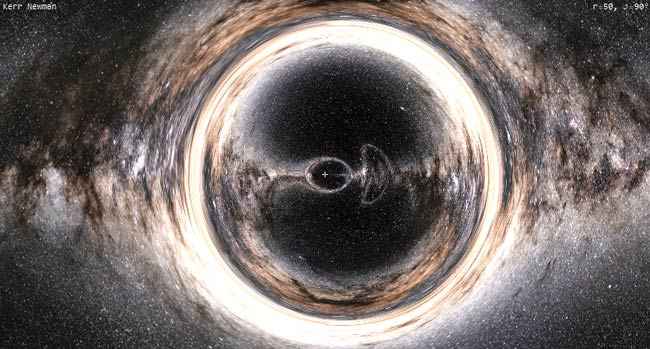
Artist’s impression of a naked singularity (left) vs a black hole (right)
No no, we’re not talking about embarrassed black holes who have had a wardrobe malfunction… in fact, we’re not really talking about black holes at all! Although black holes are thought to have singularities at their centres, what black holes also have is an event horizon, beyond which even light cannot escape, and thus, no information escapes either. Yes, we’re aware that Hawking Radiation can escape a black hole in theory, but we’re keeping things simple for this article.
Now, imagine a singularity that has a given amount of mass in a nearly infinitely small space, but at the same time does not have an event horizon, then that object would be called a naked singularity. This is, of course, a theoretical object, but it does pop out from the extremely advanced math that physicists indulge in.
Essentially, if a singularity were to rotate faster than a given threshold speed, it would become a sort of ring-shaped object, which would expose the singularity directly to normal spacetime, and thus allow observation of it. Some have likened this to the idea of a wormhole, at least in shape, though the idea of travelling from one part of the universe to another might be far fetched. All that we could possibly learn from observing a naked singularity is what happens to an object when it is swallowed by a singularity, instead of losing sight of it at the event horizon. If the movie Interstellar were to have used a naked singularity, it would be very easy for the protagonists to gather data about the singularity, and no one would need to jump into it.
Time
Time is a popular topic that we think we know the nature of, and yet we don’t. Einstein decided to use time as a dimension in his mathematics, and boy did that change the world, but it doesn’t answer one fundamental question which is pretty simple to understand. Let’s do a thought experiment. Walk three steps forward. You have now moved a particular direction in space, you can choose to stay where you are, or if you’re lazy like us, you want to get back to your comfortable seat. Thus, you walk three steps back. Now, can you go back 20 seconds and unread this paragraph? If time really is a dimension, then travel backwards and forwards should be possible, and yet, we already know that time travel to the past is impossible, and yet we sit here travelling exactly one moment at a time into the future!
So if it’s not a dimension, what is it? And therein lies the problem. We just don’t know what the nature of time is. Can it be stopped? Rewound? Fast forwarded? Sure you can fool it by travelling close to the speed of light out in space while your family stays on earth, and that would cause you to experience time differently since time is relative. You could come back a decade later in Earth time and only a few months would have passed for you! But that’s just using speed to minimise the effects of time (i.e. ageing). It’s not reversing what is called the Arrow of Time. In normal time people will see a vase fall off a table and shatter. If you could see the vase on earth when you were travelling at close to light speed, you would see the vase fall and shatter very quickly, like watching it on fast forward. If the vase was on your ship, and people on earth could see it, they would see the vase slow down and fall at an incredibly slow speed, and eventually shatter in slow motion. However, that motion would always be along the arrow of time. There’s nothing we know of that can cause the shattered vase to appear to reform and fix itself while it flies back up onto the table. So easily done with a video playing backwards, but impossible to imagine happening in reality.
Philosophically, time has always been of great interest, and caused a lot of controversies, so much so that there are schools of thought that think time isn’t actually a thing, it’s just made up, like an illusion. Perhaps it’s not time that we experience but entropy. Modern physics believes that time is very much real, and is certainly part of the four dimensions of spacetime. However, the flow of time is what is considered to be an illusion. The flow of time is based on our perceptions and seems to always flow from the past to the future. Think of time as a river, and you as a boat, then you are being carried along by the tide. Forever headed downstream towards the future, and never able to move back upstream to the past. Instead, physicists believe that the flow itself is just in our minds. We live in only one moment, call it ‘now’, and because we have memories of earlier moments, we assume that time changes, but maybe it doesn’t, and it’s just us who are moving through spacetime.
Think about it like a movie on your phone. You transfer the file to your phone. This file that existed before it came to your phone is still in your future. It’s a movie you haven’t seen yet. While you’re watching the movie for the first time, it feels like the present. Like right now, happening in real time, even though you know this file existed before it came to you, and the movie was probably shot months or even years ago, it still feels like the present when you are watching it for the first time. Now, if you watch the movie again immediately, it will always remind you of the past, or the first time you watched the movie. Maybe you notice a few things that you didn’t notice before when you watched it the first time. Perhaps you finally understand a subtle hint, because you now know the ending of the movie. Whatever the case, you now have a new “now” for some of it but most of it is still in the past.
Through all of that, outside of your own little conscious bubble, what really changed? If someone else came into your little universe (maybe your room is your universe) and looked at you and your phone, they would find no difference in file size, and no real difference in you. Everything in that room would be unchanged from an external point of view, and yet your mind perceives a passage of time, a change in knowledge, an experience that is essentially invisible outside of the closed system that is your room. It’s why we have parents and significant others bugging us for ‘doing nothing the whole day’ and yet we feel like we have done a lot… the next time that happens, shrug your shoulders as you exclaim, “Crazy huh? Time is relative, and maybe an illusion. So let’s not sweat the small stuff…” (Remember to duck when stuff is thrown at you).
Qualia
While we’re talking about illusions and perception of reality, there’s this concept called qualia that brings absolutely everything into question. This is more of a philosophical mystery than a scientific one, but we couldn’t resist adding it here, because it brings everything into question. The term itself comes from the Latin word quālis, which means “of what kind”. The American philosopher C.I. Lewis is credited with first using it in a modern way in his book ‘Mind and the World Order’.
Think of qualia as the experiences that you have with the world. Now, in order to live in society, we have to agree on the validity of experiences. You are sitting on a bench minding your own business and I walk up and punch you in the nose, there is a shared experience not just between us, but also with all the bystanders who saw it happen. When the police arrive, and you and other bystanders describe what I did, I’m going to jail. This is because it is a shared experience, and everyone’s qualia match. However, how do we know that everything does indeed match?
Take for example two people (A and B) who have only one major difference – while one sees colours normally, the other sees them inverted. Both have grown up learning the same name for colours, and thus A thinks of the background of our logo as “red” and B thinks of the inverse (what appears light blue) as “red” also. The text ‘digit’ is also viewed the same way – A calls the text on the left ‘white’ and B calls the text on the right ‘white’. The same applies to dark, light, and pretty much everything else as well. Since there’s no disagreement between the two ever, and both always see each other use the correct names for colours, they would think that the world looks identical to both of them. Yet, we know for a fact that if A was shown what B sees, he would certainly disagree with B that the image on the right is a white logo on a red background. This is the simplest way we can think of to illustrate the qualia problem, which essentially calls into question reality itself.
Measurement problem
In the quantum world, because there is wave-particle duality, we never know exact states of subatomic particles until we measure them. For example, we know the probability of where we will find an electron in an electron shell, and it doesn’t behave like an object until the instant you measure something.
Think of it in terms of Schrodinger’s cat. If we were able to put a cat in a box and attach a killing mechanism based on a quantum event, such as the decay of a radioactive atom, then we would be able to tell just by looking at the cat if the atom had decayed or was still intact. Lock up the box, and the cat can be considered to be both dead and alive (in terms of probability) until we check that is. As soon as we see inside the box, we find out whether the cat is alive or dead. However, when it comes to quantum particles, it seems that they’re all of the options at once, and it’s the act of measuring that makes the decision. It’s almost as if the cat was actually equally alive as it was dead, but it was the opening of the box that killed it (or didn’t). It’s not like the atom decayed at some point in time and killed the cat, in the quantum world, it’s almost as if the opening of the box forces that decision.
This is what’s considered the measurement problem in physics, and we have no real idea as to why this is the case. Of course, no one is killing any cats when doing this, it’s more about trying to figure out if or when a wave function collapses. If you’ve read about wave-particle duality you have probably already heard of the term ‘wave function’, but if you haven’t…
Quantum particles such as electrons and photons act as if they’re waves sometimes and particles sometimes. You can read about the double-slit experiment to understand this better. However, the act of observation of an electron or a photon always seem to show them as particles. Yet, when left alone, they display the characteristics of being a wave. This, in essence, is where the head scratching begins. Are they waves that suddenly become particles when measured (and thus their ‘wave function collapses’), or are they always particles, but just riding a wave of something unknown? We still don’t know, and there’s a Nobel prize and a standing ovation from the scientific community waiting for anyone who can figure it out.
Planet 9?
Sounds like a conspiracy theory the minute you read it, doesn’t it? This is especially the case if you’ve been exposed to sci-fi conspiracy theories such as Planet X or the Nibiru hoax in the past. Rest assured, however, that the planet 9 hypothesis is certainly based on observable science, and though it very well may be wrong, or the observations might eventually be explained away using another hypothesis, it is still a distinct possibility that planet 9 exists. Let’s start at the start though.
For decades astronomers have been searching beyond the orbit of Neptune for large planetary-sized bodies. The discovery of Pluto way back in February of 1930 was based on observations of the orbits of Uranus and Neptune. Discrepancies in the expected and observed orbits led scientists to think that there were probably more ‘planets’ out there. When Pluto was discovered, it was known that it was too small to explain the differences in the orbits of Uranus and Neptune, and thus, the search continued. It wasn’t until much later (2005) that we would discover Eris, which started the debate over what a planet was. Since Eris was actually more massive than Pluto, if we considered Pluto a planet, we’d also have to consider Eris a planet. Pluto actually occupies more volume than Eris, and so in that sense is ‘bigger’, but physics prefers to measure using mass because it is mass that we use to measure gravitational attraction. Eventually, both Eris and Pluto were classified as dwarf planets and the planet count of the solar system went back to eight.
As the years went by, more and more trans-Neptune objects (TNOs) were discovered, and then their orbits were plotted, and it soon became apparent that there were actually some discrepancies in those orbits as well. When computer simulations were done, it was discovered that one of the simulations that explained the observations was a large planet that was up to 10 times as massive as Earth, and orbiting the sun about 400 to 800 astronomical units (1 AU is the average distance between the Earth and the sun). Pluto, for example, has an average orbit of 40 AU (the closest it gets to the sun is about 30 AU and the farthest away it goes is about 50 AU), so planet 9 is thought to be 10 to 20 times further away than Pluto is! If it exists, Planet 9 will take between 10,000 and 20,000 years to orbit the sun once! To understand how long this is, consider that Neptune takes about 165 years, Pluto takes 248 years, and Eris takes 558 years.
Now, to be clear, this is a hypothesis, and there are other explanations possible as well. For one thing, it’s a lot easier to simulate and calculate complex things like orbits using a single, large planet, instead of multiple smaller bodies that may have the same effect but with wildly different orbits. This is an idea that was worked upon by a couple of researchers recently and yielded nearly similar results to Planet 9. In a study released in January, two researchers, Antranik A. Sefilian from Cambridge University and Jihad R. Touma from Beirut University, have developed a model that calculates the gravitational effects of a disc of smaller objects with a combined mass that’s equivalent to the mass of Planet 9. The model was successfully able to match what we’ve observed in terms of orbits of all known eTNOs (extreme trans-Neptunian Objects), and thus is another viable hypothesis. The problem is, planet 9 has never been observed (because of how far it is), and neither has this disc of smaller objects (because of how small they might be). The only way we’re going to find out for sure is if we send something out there capable of observing either of the two hypothesised solutions. Of course, we might find that the true answer lies somewhere in the middle, and perhaps there is both a disc as well as a much smaller planet 9, but as it stands, we simply just do not know.
Missing Lithium
The Big Bang Theory is widely accepted as the best explanation we have for the origin story of our universe. Until we come up with a better explanation, we have to assume that the BBT is how it all happened, because that’s how science works. Unlike, say, the theory of evolution, which thus far has not had too many problems with observed data, the BBT does, in fact, have large holes that still need to be filled before we can consider it to be as accurate a theory as evolution is.
One of those rather large holes in the theory is the problem of Lithium. According to the BBT, for up to 20 minutes after the Big Bang occurred, the universe was expanding rapidly and was very, very hot. Atomic nuclei were starting to form at this time, but obviously because of the immense heat, were unable to form bonds with electrons to actually form atoms. According to the theory, only nuclei of lighter elements such as Helium, Deuterium and Lithium should have formed, as it would need fusion to form heavier elements, which would occur much later when stars formed and eventually died.
Based on observations, the BBT theory is spot on for Hydrogen and Helium but is off by a mile when it comes to the amount of Lithium observed in the universe. Observations suggest that there is 3 or 4 times less lithium in the universe than we expect to see. However, many studies are proposing explanations for why we see so little lithium, and though none have been elevated to the level of a theory yet (which would solve the lithium problem as we know it), it’s hoped that one of them might be based on observational data. Of all of the problems in this list of 18, this is the one that might be solved first, or so we hope, because the Big Bang Theory is such an elegant theory, and it would be nice to remove this thorn in its side.
Why do we age
The phenomenon called senescence (biological ageing) is the slow deterioration of a body that is observed in most multicellular organisms. Of course, it is not necessary that this occurs in all multicellular organisms, and the genus Hydra show no noticeable senescence at all. Not just that, hydra are also known for their ability to regenerate, as are other animals, such as starfish. In fact, starfish are not just able to regrow an arm when it’s cut off, but some species are able to regrow entire bodies from decapitated arms!
Obviously, we humans want to live forever, though we may not want a severed toe to grow into a new human… even if we cannot completely stop ageing, there is a lot of research going into trying to slow down ageing and increase life spans. It’s a search for the proverbial fountain of youth, and you can bet pharma companies are desperate to find it. Most people would pay a tidy sum to be able to live twice as long, wouldn’t you?
Of course, it might be a complete waste of time as well, because we may very well be genetically programmed to have an expiry date because evolution might demand that we die. It might be that species that can live forever do not focus as much on reproduction as another species that has an expiry date. The drive to make sure one’s genes survive might not be as great when the gene can potentially survive forever, or at least for very long inside a single organism. So perhaps evolution has naturally selected for species that die, and have a pretty fixed life clock, which encourages reproduction. Then there’s population control to consider as well because a rampaging population would use up much more resources, and soon kill itself off. Again, natural selection would ensure that immortal species were eventually wiped out, especially if they didn’t have natural predators who could keep their numbers in check.
So can we fight against evolution to become immortal? We are certainly going to try, aren’t we?
What’s inside a black hole?
A black hole is essentially an object with such a high mass in such a small volume, that it pretty much defies the laws of physics as we know them. So strong is its gravitational attraction that even light cannot escape its pull. Of course, since gravity reduces with the square of the distance to the object it is acting on, there is a point in space from the ‘singularity’ where gravity is low enough for light to escape – any closer and even light gets sucked in. This distance from the singularity in space is called the event horizon of the black hole. Because all of the signals we are capable of detecting are physical – composed of matter or particles of some sort – we cannot measure anything past the event horizon of a black hole.
Why would we want to? Because beyond the event horizon of a black hole might lie the clue to laws and new physics that we haven’t even thought of. We’d need to be able to ‘look into’ a black hole’s event horizon to understand the very beginning of our universe. All of what we know about physics cannot take us past a certain point in the origins of our universe, and thus even the Big Bang is only understandable by us to a certain point that’s a tiny amount of time after the bang actually occurred. Inside the event horizon of a black hole, or even inside the singularity itself might lie the answers to multiple questions, such as what happened before the big bang, and was there a ‘before’ to even consider. Plus, we might be able to answer questions about whether or not there are multiple universes, or whether there is a point at which the forces we observe in nature can be combined into one unifying force – this would lead to a unified theory of everything, and finally bring a relation between the other forces and gravity.
The problem is, the nearest black holes are too far away for even probes to be sent to, and we certainly don’t want a black hole to get any closer to us either… If the missing lithium problem that we mentioned above is the most likely to be answered, this one might be the least likely.
Theory of everything
We just mentioned the unified theory of everything above, now it’s time to explain it. Also called the theory of everything, it’s perhaps the most popular problem in physics, which has the most number of theoretical physicists trying to solve the problem (directly or indirectly). The aim is to have a theory that links together and explains all physical properties and observations of the universe. Now it’s time to explain that last word salad of a sentence.
In modern physics, we have Einstein’s explanation of gravity that involves the use of the four dimensions of spacetime. Called General relativity, this is an explanation by Einstein that works so well that it explains precisely the orbits and motions of all celestial bodies we have ever seen. While Newton’s theory (which General relativity replaced later) was based on simple mass and distance of two objects, and never explained why gravity was experienced, GR actually explained how gravity worked and was far more precise. This theory works perfectly for all large objects in the macro scale. It does not really work at the subatomic scale.
To describe the subatomic scale of the universe, the theory of choice is the Standard Model, which successfully explains the other three observed forces of nature, which are electromagnetic, weak and strong forces. The recent (2012) discovery of the Higgs Boson was another confirmation of the veracity of the Standard Model.
Now, with two very strong theories existing to explain the universe, both with a lot of observational data to back them up, and even predictions that they make being confirmed, it feels obvious that both are right. However, if the Standard Model explains how all subatomic particles behave, there must be a way to scale it up to the macro world and even up to the sizes of planets, stars, galaxies and the universe as a whole. Similarly, if General Relativity can perfectly explain how gravity affects things at our size, it should be able to be scaled down to the subatomic level.
Doing so has proven to be far tougher than we ever anticipated, with some theories inventing 22 more dimensions in an attempt to do so. Even the most popular theory right now, M-Theory has a need for 11 dimensions (10 space and 1 time), and even then it doesn’t conclusively become a grand theory of everything. In fact, the problem with most solutions to this problem is that they are essentially untestable by us mere 4-dimensional beings. They could be right, but without some way of testing them, can we believe them to be the answer? Therein lies the problem, and thus the mystery.
Dimensionless Constants
This is a weird problem that we have known for a long time. As we have observed and measured and discovered more about our universe, we’ve come across these weird figures and numbers that have no explanation. Some of them are just pure physical constants, such as the speed of light. We know that the speed of light in space is 2.998 x 10^8 metres per second, and based on Einstein’s theories, this is considered to be the speed limit of the universe, with nothing being able to travel faster in local space than this figure. Why this particular figure and not another? We don’t know. Is this figure somehow unique for our universe, and if there had been a slight change in the way the Big Bang happened, would this figure be different, or is it a property of the universe/multiverse itself? We don’t know.
However, even stranger than the speed of light, and other physical constants are dimensionless constants, and here’s why. As the name suggests, these constants do not have a property, they’re just a number. For example, the speed of light is a speed, and thus has the ‘metres per second’ description attached to the number. In contrast, the cosmological constant has a value of 10^-122 and is just a number. In fact, it’s usually denoted by the letter Λ (lambda) in equations, because we don’t want to have to write 10^-122 all the time. The math needed to arrive at this is beyond our understanding, but simplified, it is basically a constant that Einstein came up with to balance the effects of gravity in order to arrive at a static universe (if he didn’t do this, the universe would collapse in on itself because of gravity). At the time, it was considered that the universe was static and had existed for all eternity. Later, when Edwin Hubble found that the universe was expanding, Einstein dropped the idea of a constant from his equations. Later still, when it was discovered that the universe was not just expanding, but the expansion was accelerating (and thus the further away galaxies were from us the faster they were moving away) the cosmological constant had to be brought back in order to balance the equation again. Because we use the term dark energy to describe the thing that’s causing the expansion of spacetime, the cosmological constant obviously describes the effects of dark energy. Not that we know what dark energy is to know why it causes the expansion… however, since we can observe the expansion, we can calculate the number, even if we do not know why or how it all works.
Similarly, there are more dimensionless constants that arise in our study of physics, and all of them are a complete mystery. The Standard Model alone throws up about 25 of these numbers, and there are even more, such as the fine structure constant, the coupling constant, proton to electron mass ratio, and many more. None of these have been explained as to why they are this specific number, we merely know the numbers from experimentation and observation.
Why do we have so much water?
This one is rather strange because if you search for this on the internet, you will find a lot of sites proclaiming that the mystery has been solved, and it’s usually because a new hypothesis about where all this water came from has been released. Of course the said hypothesis is usually based on a very niche observation and can explain away some amount of the water, for example, theories about how water could have been squeezed out of rocks when the earth was still molten have been touted as the answer before, only to later learn that they do not explain away all of the water or even an appreciable fraction of it all. Then there’s the idea of a comet bombardment, which is another theory that has its problems. Whatever the theory, none of them are able to explain the vast amounts of water we have on the planet.
The reason that we are searching for an explanation is because it is thought that it would be impossible for life to get started and evolve on earth if it wasn’t for all the water we have. In our search for life out there, we obviously need to search for planets that have a similar amount of water as us, and to do so, we need to know how the water got on here. For example, if it is the case that comets bombarding the inner planets is a way to get enough water on one of them for life to get started, we know that not only do we need to look at a star that has a rocky planet in the Goldilocks zone, but also find a solar system that seems to have cleared itself of most of the comets orbiting it. However, if it is a large planet on planet collision (like the one that formed our moon) that caused water content to be doubled on the larger planet, for example, then we need to look for telltale signs of solar systems where planets in the Goldilocks zone have collided in the past. Either way, it becomes important to know where we got all this water from if we’re ever going to find life as we know it out in the stars. As of yet, though, there’s no clear explanation.
There are a few likely contenders, based on experiments, and one of those is the theory that a lot of our water originated in the asteroid belt. Because of Jupiter’s massive size, what’s now the asteroid belt would have been thrown into turmoil, and this would have sent asteroids flying in towards the sun. A lot of those would have hit earth and brought water to it. This theory is supported by the fact that the water on earth is identical to the water found in the asteroid belt – the ratio of deuterium to hydrogen in the water is identical. Of course, more testing is needed, and we’d need to properly explore the asteroid belt to confirm this. For now, it’s still a mystery waiting to be solved.
Final parsec problem
Recently the scientific world was abuzz with the discovery of gravitational waves. It took the collision of two black holes (36 and 29 times as massive as the sun) for our most advanced equipment on earth to be able to measure the waves. So small was the perturbance that we measured, that it’s the equivalent of changing the distance between our sun and proxima centauri by the width of a human hair. Yes, that’s how accurate the devices we set up are. However, while that is an impressive feat, the observation did raise another problem. Based on all we know of gravity and how it impacts the universe, two black holes should take a lot longer to merge than the universe has been around!
When two black holes are coming close to one another, they need to be able to impart energy to stuff around them. Whether stars, planets or large gas clouds, black holes can cause them to rotate faster so as to conserve angular momentum themselves. This means that black holes have to lose energy in order to spiral in closer to one another, and losing energy is not something black holes like to do (energy and mass are equivalent, remember, and black holes suck in energy and mass, not give it off).
When it comes down to the final parsec (about 3.26 light years), the two black holes should have cleared away everything around them, by ejecting it all outwards as a way of losing energy. At this point, they would be spinning around each other at super speeds, and with nothing left to clear and thus reduce energy or angular momentum, it should take a very long time before they merge. So long, in fact, that our universe isn’t considered to be old enough for such mergers to happen. And yet, we’ve observed a few in our limited lifetimes, and thus, something is certainly wrong in our knowledge somewhere. We just don’t know how we’re wrong.
Why is there matter?
Again, going back to the Big Bang, the theory states that all of what we see around us arose from nothing. The Big bang was, in fact, the explosion of nothing to form something, which is totally weird for most of us to imagine. However, through very complex mathematics and even observations, we’ve come to realise that “the universe is under no obligation to make sense to us” (to quote NdGT).
Also known as baryon asymmetry, we have a problem with explaining why we see so much more matter than antimatter around us. After the Big Bang, there must have been an imbalance in the amount of matter and antimatter, which would have caused what’s known as baryogenesis – the birth of matter. Earliest theories suggested that there would have been a very miniscule amount of asymmetry (1 in 10^10) about 0.00000001% more matter than antimatter. However, experiments done in particle accelerators (Fermilab for one) suggest that the asymmetry might be as high as 1% (1 in 100), and that would certainly explain all this matter we have around us. However, why that is the case, and why, in accordance with our mathematics, is more matter produced than antimatter is just a mystery that’s waiting to be solved.
Does Chaos exist?
While we think of chaos to mean randomness in English, in Physics it essentially means unpredictable behaviour, which is different from randomness. A very philosophical problem this, which questions the very nature of our universe. Since we look at a small slice of the universe (the space around us) we think of things happening as chaotic, because we cannot predict them. A prime example is the weather on earth, which despite our best efforts is still a mystery. Sure we can look at events as they happen and see a low-pressure zone forming, and then predict short term weather using that, but as we lengthen the prediction timeline, the worse our predictions get. At best we can predict a week in advance, and that too with a lot of data points and calculations, and yet, those are often wrong as well. Heck, we’ve even reached the stage where we can somewhat control the weather, and have started seeding clouds to make it rain, for instance. We still cannot tell you exactly what the next month will bring in terms of weather.
This is because we consider there to be too many variables to be able to predict anything, and we also cut off the size of our closed system to the earth. However, as we know, the moon, the sun and even the planets all play roles of varying degrees in affecting our planet, and its weather. And it’s not just at a larger scale that we need to look, it’s also at the smaller scale, where we look at what we’re doing as individuals. Maybe you not driving a car today makes very little difference to the weather as a whole, but then if we consider the varying effects of a billion of us and our driving habits, and you can see how it all starts to build up.
The question really is, if we could account for every atom in the solar system, would we be able to predict the weather on earth perfectly? Would it require us to know what every atom in the known universe was doing? Maybe just every atom in our Milky Way galaxy? And if it was just a question of computing everything, is it still chaos? This mystery actually gives rise to the next one in the list…
Consciousness and Free will
This is a two-part mystery, and it’s a doozy! The first one is easier to understand for most of us, and that’s because it’s about us. We are a self-aware species, and we’re conscious. But what is consciousness, and where does it reside? Is a brain in a box still a person, and as much of a person as the brain was when it was in a body? There are a million questions that revolve around consciousness, and we’re not going to sit around asking or answering them all. What’s more important is that we don’t fully understand consciousness and where it comes from. We have a huge gap to explain when it comes to jumping from atoms to cells to people and eventually consciousness.
While most biologists will tell you that the consciousness certainly has something to do with the brain, if not everything, we’re having a hard time explaining how it is that certain living things that don’t have brains are able to accomplish. For example, when you play back the sound of a caterpillar chomping on leaves, certain plants are able to ‘hear’ that chomping somehow, and react by letting off chemicals that attempt to ward off the caterpillars. How on earth can a plant do this without a brain, and how is it able to hear, let alone react is a mystery. Are plants also conscious? We’ve written a dmystify in the past about ‘Intelligent Plants’, and they certainly seem to have some low level of consciousness – they communicate with one another, help one another, compete, go to war, display altruistic qualities, play when they’re young… Controversial ideas for sure, but there is a new field called plant neurobiology that is researching this field, and what it’s finding is shocking, to say the least. In the context of this article, however, it begs the question, if plants are conscious, and have no brain, then does consciousness really reside in the brain? And whether it does or doesn’t, what is consciousness, and how does it work? Perhaps there is something to the new field of study called quantum consciousness, which aims to use the craziness of the quantum world to describe our consciousness. The idea is that quantum phenomena such as quantum entanglement and superposition might be more accurate ways of trying to understand what consciousness really is. Either way, we still don’t know yet, and it’s a well-researched field because understanding what it is would probably lead to one being created artificially – and we all know how big an improvement it would be to have proper AI, don’t we?
A subset of consciousness is the idea of free will, and this continues from the previous mystery of whether chaos exists or not. Obviously, if there is no such thing as chaos, then there cannot be free will. If everything can be calculated, then we can calculate whether you have reached this deep in this rather long-form article or not, or whether you will crave coffee with breakfast tomorrow or not, or whether you will kill someone in your lifetime… there would be nothing we couldn’t calculate, and that would lead us to a Minority Report-style pre-crimes division, except that this would actually be foolproof.
However, it’s not just dependent on chaos, as studies have shown that the brain makes up its mind when given a simple choice (yes or no answers) before the person knows the answer themselves. In the study, the researchers were able to predict the choice the volunteer would make up to 11 seconds before they were even asked to choose! The brain had already taken the data in and made the decision before the question was even asked, and if the brain was doing this on its own, was the ‘consciousness’ of the participant even involved in the decision-making process? And if it’s not a conscious decision that you would think about and then decide, is it really ‘free will’. Obviously this was a very simple setup, and there is much more research that needs to be done in the field, but from what we know so far, we know that the brain is definitely involved in the decision-making process, but whether or not it needs you (the conscious you) to be involved in the decision is debatable. This has large repercussions, because if there is no such thing as free will, then a murderer could be nothing other than a murderer given his or her life experiences. It would bring into question the idea of the death penalty, and also make a lot of us question our very existence. Heck, it might even point to us all being part of a very grand scale computer simulation, with merely the illusion of free will. Yet another mystery waiting to be solved, but this one probably hits closest to home for all of us.
What’s outside the universe
First of all, is there an outside to the universe? We just don’t know. There are already parts of our universe that are forever hidden from us, and if the universe keeps expanding the way it is, accelerating all the time, even more and more of the universe will be forever lost to us. The observable universe is about 93 billion light years in diameter, with us at the center. Most of the galaxies inside the observable universe are at this moment in time accelerating away from us faster than the speed of light because of the spacetime between us expanding that fast. In fact, a much smaller sphere than the observable universe, called the Hubble Sphere is the demarcation of what areas of spacetime aren’t moving away from us at faster than light speed. Of course, because the Hubble Sphere itself is expanding, light emitted from a galaxy that’s just outside the Hubble Sphere will eventually reach us (or rather reach this point in spacetime where the earth is) billions of years from now. Even today, we’re looking at light that left some galaxies billions of years ago, and when they left that galaxy, they were already outside of the Hubble Sphere of the space we occupy right now, and yet that light reached us because of the expansion of the Hubble Sphere itself because of the expansion of spacetime. Yes, we know it’s confusing, but know that you’re in good company because this confuses most of humanity.
Now, if our universe is expanding, what is it expanding into? When you blow a bubble or a balloon and it expands, we know it expands because we can see it grow from the outside. If you were as small as a molecule of nitrogen inside the bubble, you would have no perception of what was outside the bubble, and thus would also be wondering what your universe was expanding into. For us, that means evoking higher dimensions, and hypothesising about an existence of a multiverse, in which our little universe is merely one of many (perhaps even infinite) bubble universes, all popping in and out of existence on a timescale that’s trillions upon trillions of years long. If that is what the truth is, there might be no way for us to ever find out, because our entire species would do really well to last even a million years, let alone a trillion, in order to be there when the universe pops like an over inflated balloon. That raises the question of what the fate of the universe is, which is another mystery, but since we’ve met our quota of 18, it’s time to sign off.
Remember to send us feedback about this article to editor@digit.in, because we don’t normally do very long-form articles, and want to know if you are fine with reading this much. Also let us know what mystery didn’t make it to this list, which you wish we’d cover.
Robert Sovereign Smith
Robert (aka Raaabo) thinks his articles will do a better job of telling you who he is than this line ever will. View Full Profile


